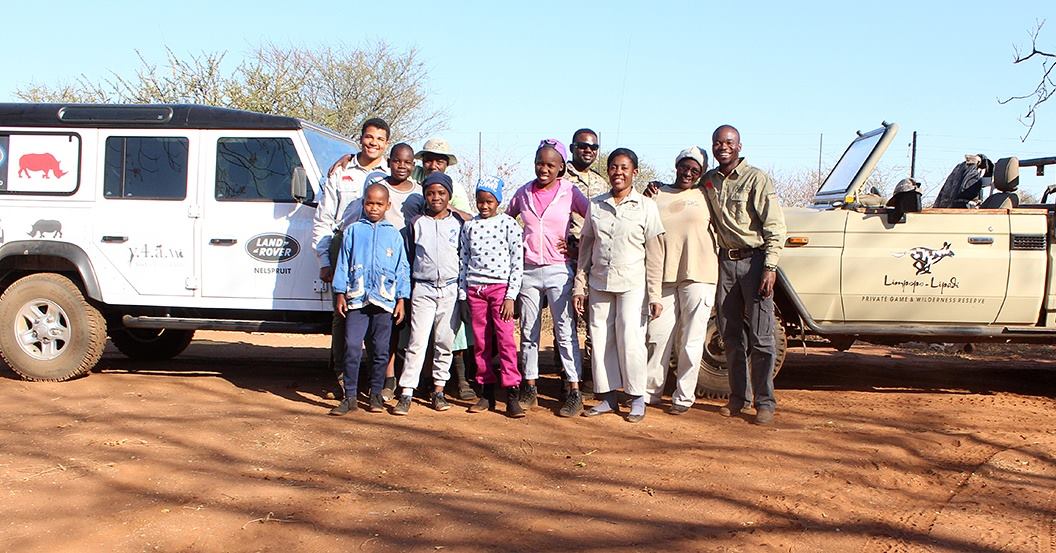Recounting My Time Helping as a Community Educator in Botswana
Much of the work that goes into conservation awareness has to do with educating the youth of tomorrow. Doing so allows for those future conservation heroes that we are very much in need of to have a proper base to stand on for their future endeavors. In the few weeks spent working with Youth 4 African Wildlife (Y4AW) I have taken note of how much emphasis they place on just that. The education provided is that of much quality and applicability when it comes to the type of lessons being given.
Myself being an intern, I was fortunate enough to take part in one of the conservation education projects that Y4AW was involved in at the Limpopo-Lipadi Nature Reserve in Botswana for one week. Essentially, Y4AW was brought in to kick-start the youth education program that the reserve was implementing and lay down plans for the future.
The children brought in were learners from around the reserve that ranged from 8-13 years of age. Going into the program I was expecting to have to start with the very basic when it came to teaching them about conservation. However, every single one of these children were extremely smart and already had a surprisingly deep knowledge of ecological principles and other things relating to what we were trying to teach them. The only thing that was really missing was the glue that would hold all the concepts together. In the brains of the children they all knew the basics of ecology and some cursory knowledge of conservation, but, they were not entirely sure how to relate to it and apply it to their daily lives. That’s where Y4AW came in.
The plans and lessons that were designed for the learners were made specifically so that they could not only walk away with a somewhat deeper understanding of conservation and ecology, but also so they could relate them all back to their daily lives. After all, what benefit would the lessons have to them if they could not link any of it back to their day to day lives? In order to make the lessons interesting for the children a variety of methods were used. The main one being the use of the game Jenga to demonstrate the different levels of the food chain and how we as people are entirely dependent on everything. The food chain was broken down as decomposers, soil, trees and plants, herbivores, predators, and humans sitting at the very top. The way that we illustrated this to the children was by showing how humans lay atop everything which also showed how we rely on everything being at the very top. When we played the game we would get the learners to remove various levels of the food chain (each represented by a Jenga piece) aside from the humans and each time without fail the tower would fall over. Doing so showed them that we need each level of the food chain to survive and when you remove too much of each we as a human species effectively topple over.
Another method used was daily evening game drives. What we wanted to achieve by taking the children on the game drives was to show them what they learned in class out in the field. Where they could truly see how these were not just concepts that they were learning in class but that they also had real world implications. More importantly, most of the children involved in the program had never seen any of the animals that are quite literally in their own backyards. Being able to go out on the game drives and allowing the children to see the animals with their own eyes made the lessons tangible and provided context for much of what was taught.
With that in mind it is important to note that a lot of children in similar situations do not have the opportunity to go out and see wildlife therefore they would not have any interest in saving something that isn’t “real” to them. However, seeing as all these children knew quite a bit already about conservation and ecology basics; it leads me to believe that all it takes to spark a passion for conservation is to just afford these children the opportunity. Because without that, the idea of conservation may seem unrealistic and unattainable to some of them.
Y4AW and other organizations doing the important work of educating the youth through various means are critical to future conservation efforts. At the end of the day, what we want is for these children to have a better understanding of the importance of wildlife. Whether it be the elephant or the termite; we want them to know that each one plays a critical part in their ecosystem. But having been able to see firsthand how smart all of these children are, and knowing all it takes is a little spark to light the fire of conservation inside them, I think that we as a human race have a very bright future ahead of us.
